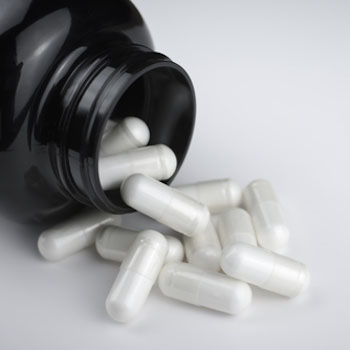Hordenine is a naturally occurring substance found in several plants, including barley (from which its name originates: Hordeum vulgare), seaweeds, Aconitum tanguticum (Maxim.) Stapf, Senecio scandens, Coryphantha ramillosa, and Citrus aurantium (bitter orange). Hordenine also can be made in a laboratory (that is, as a synthetic chemical). Both natural and synthetic hordenine might promote stimulant effects.
Products containing hordenine are considered “adulterated,” and the safety of hordenine is unknown. Hordenine is on the DoD Prohibited Dietary Supplement Ingredients list.
Hordenine is structurally similar to other natural phenethylamines (which act to stimulate the body), such as N-methyltyramine and synephrine, and it appears to be structurally related to ephedrine. In fact, when ephedra-containing products were removed from the dietary supplement market due to safety concerns, other stimulant substances (including hordenine) began to emerge as ingredients in dietary supplement products marketed for weight loss and athletic performance.
The U.S. Food & Drug Administration (FDA) recently determined hordenine to be a “new dietary ingredient (NDI) for which an NDI notification is required and has not yet been submitted.” Therefore, any product containing hordenine is considered “adulterated.”
What does the science say?
Hordenine is possibly unsafe when taken by mouth and might cause stimulant side effects such as rapid heart rate and high blood pressure. Most studies showing these effects were done with animals, and limited human studies are available to date. The latest studies analyzing products that list hordenine as an ingredient show that such products sometimes contain more hordenine than reported on product labels, while others can contain additional substances (either listed or not shown on the labels) not approved for use in dietary supplements.
How can I watch out for this ingredient?
Although FDA guidelines require manufacturers to list common names of an ingredient, you should be aware of other names used so you can avoid adulterated hordenine products. Some names that might appear on a product label instead of “hordenine” include:
- anhaline
- eremursine
- N,N-dimethyltyramine
- peyocactine
- p-hydroxy-N,N-dimethylphenethylamine
- 4-[2-(dimethylamino)ethyl]phenol
- 2-(4-hydroxyphenyl)N,Ndimethyl-
- ethylamine
- cactine
- ordenina
- ordenine
- N,N-dimethyl-4-hydroxy-beta-phenethylamine
Hordenine is on the DoD Prohibited Dietary Supplement Ingredients list and the National Collegiate Athletic Association’s (NCAA) list of banned substances. In addition, hordenine might register on an initial urine screening test for amphetamines or opioids, but it will not cause a positive result on a confirmation drug test.
Bottom line
Products containing hordenine are prohibited for use by Service Members and considered “adulterated” because it is a new dietary ingredient that hasn’t been submitted to FDA to establish its safety. It is unknown how they might affect your readiness or health.
Updated 07 March 2022

